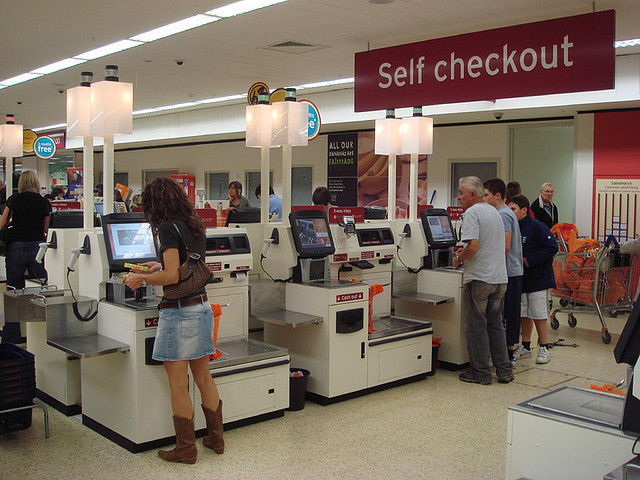
What is fabulous service? How do you define a “delightful experience”?
To many, an exceptional encounter is a heroic one, epitomised by a smiling human being who jumps through flaming hoops to provide memorable encounters.
The guy who took a taxi all the way to the airport to return your lost wallet just before your flight.
The chef at the restaurant who baked you a beautiful birthday cake on the day of your birth.
The sales assistant who allowed you to try over a dozen outfits before selecting one, without so much as a grimace on her bright beaming face.
Great Service = Human Hospitality?
Traditionally, service and hospitality went together.
This was especially so in Asia, where we’re known for our heady mix of exotic oriental smiles, warm personality and serving hands.
Iconic gestures like the Thai “wai” or Indian “namaste” (palms pressed together in prayerful fashion) and Japanese bow stick in our heads.
While many consider service to be an intimate one-to-one human interaction, the sordid truth is that such expectations are becoming harder to achieve.
With rising manpower costs, tight labour markets, and the growing aspirations of younger workers, the days of being waited on hand to mouth may soon be over.
This would be especially so in labour intensive industries like F&B, hotels, and retail.
Introducing “No Service”
What then should your solution be? Consider introducing the concept of “No Service“.
Now wait a minute. I’m not advocating your diners to cook their own meals from scratch, or to expect your passengers to drive their own buses.
Rather, I’m proposing how your customer facing processes and workflows can be optimised such that there is a minimal need for human intervention.
Some of the principles involved are as follows:
#1 Fulfillment through Technology
Leverage on technology on site to transmit the requests of your customers to fulfillment.
This can be anything from taking orders at a restaurant to transmitting information from retail customers to upstream suppliers. Handheld tablets and touchscreens on tables are common ways to do so in F&B outlets. Ditto for purchasing cinema tickets and concert tickets.
#2 Incentivise Guests to Pre-order
Provide an attractive incentive for guests/customers to pre-order before arrival so as to minimise transaction times. For example, shops can offer a 10% discount for customers who pre-order online and simply pick up and go at the outlet.
#3 Use Default Choices to minimise the paradox of choice
Encourage your customers to opt for default choices as the most popular/beneficial option. This should be done as intelligently as possible based on one’s knowledge of customer demographics, behavioural patterns and transactional history.
This could be done through a nudge which is defined as “… any aspect of the choice architecture that alters people’s behavior in a predictable way without forbidding any options or significantly changing their economic incentives.”
You can read more about applying defaults in the 6 principles of Nudge here.
#4 Optimise Customer Flows
Design customer spaces to optimise natural behaviours and movements. This should be done to move them from point A to point B in an intuitive fashion requiring minimal human intervention.
Global retailer Ikea is obviously a master at doing so.
Every one of their shops are designed and arranged in such a way that you walk into different “rooms” with furniture and furnishing products that are placed at the right spot. The use of both online and offline catalogues also helps to speed up customer self-service and minimise the need for human interactions.
#5 Use Artificial Intelligence (A.I.) powered CRM systems
Invest in A.I.-powered customer intelligence software and CRM systems to do the following:
- Mine your customer’s preferences based on his or her past purchases
- Find a way to get your customer’s ‘size’ and preference data (eg favourite colours)
- Use A.I. to intelligently suggest what other products or services your customers may be interested in (“You may also be interested in this…”)
- Invest in Virtual Reality and Augmented Reality technologies to create anticipation ahead of the sale
While not every company can be as sophisticated as Amazon in mining customer data for insights, there are various types of social CRM that companies can explore.
#6 Create Apps that Aid Customers
Develop apps and software that tap on the immense power of the smartphone.
Technology is already widely available to customers who can use their mobiles for payment and pre-orders. With GPS and location-sensing technology, retailers and service providers can also pinpoint where their customers are with greater accuracy.
A smartphone can also be used for all kinds of access – from airplanes to hotels.
Oh, and customers could also store all their ‘vital statistics’ like body measurements (waist size, shoulder width, arm length, leg length, etc) in that device. Such data can then be easily downloaded in a store so that the perfect size could be found for you in a jiffy.
#7 Make it Fun to “Self-serve”
Modify processes to make it a game for customers to “self-serve”.
This can be anything from rolling their own popiahs (spring rolls), checking out at supermarkets, to perhaps even (gasp) doing their own dishes. An element of gamification and playfulness could be deployed here.
I honestly believe this is the main reason why hot pot restaurants and table-side Korean barbecues are so popular here in Singapore.
#8 Teach Customers and Give Them the Tools
Finally, you should find a way to empower your customers to self-serve by giving them the tools to do so. While doing so, make your User Interfaces (UI) and User Experiences (UX) fun and enjoyable (see gamification above).
This may include any of the following:
- Providing them with a measuring tape so that they can measure their home room dimensions, furniture spaces, or their own physical dimensions
- Giving them instructions and guides that can help them to enrich their purchase decisions before they buy
- Incentivising them (eg with a voucher) to input their data into an app that is super easy to use, or to use a cashless payment mode
- Transforming your business model from a “walk into a store and buy” model into a “subscribe as a member” model. This is what companies like Dollar Shave Club has been doing for razors.
A System Solution
Naturally, this notion of no service or self service isn’t an easy one to adopt.
Beyond incentives designed to shift customer behaviours, the right infrastructure – technology, physical spaces, systems, processes, and training – needs to be in place.
You also need leadership to set the example, and build the right culture in the organisation.
“No service” is further complicated by the fact that people may actually crave human contact as they become increasingly disillusioned with technology.
Having said that, you may not be in a position to choose. Our existing labour crunch and the career expectations of youth around the world continues to march in opposite directions.
If we cannot have our cake and eat it, the solution may lie in learning how to bake it – especially if we can’t find somebody to do it for us.
Do you agree that “no service” could be the best service? How else can we resolve the manpower dilemma?

Do you enjoy the self check out queues at supermarkets? (courtesy of MUO)
